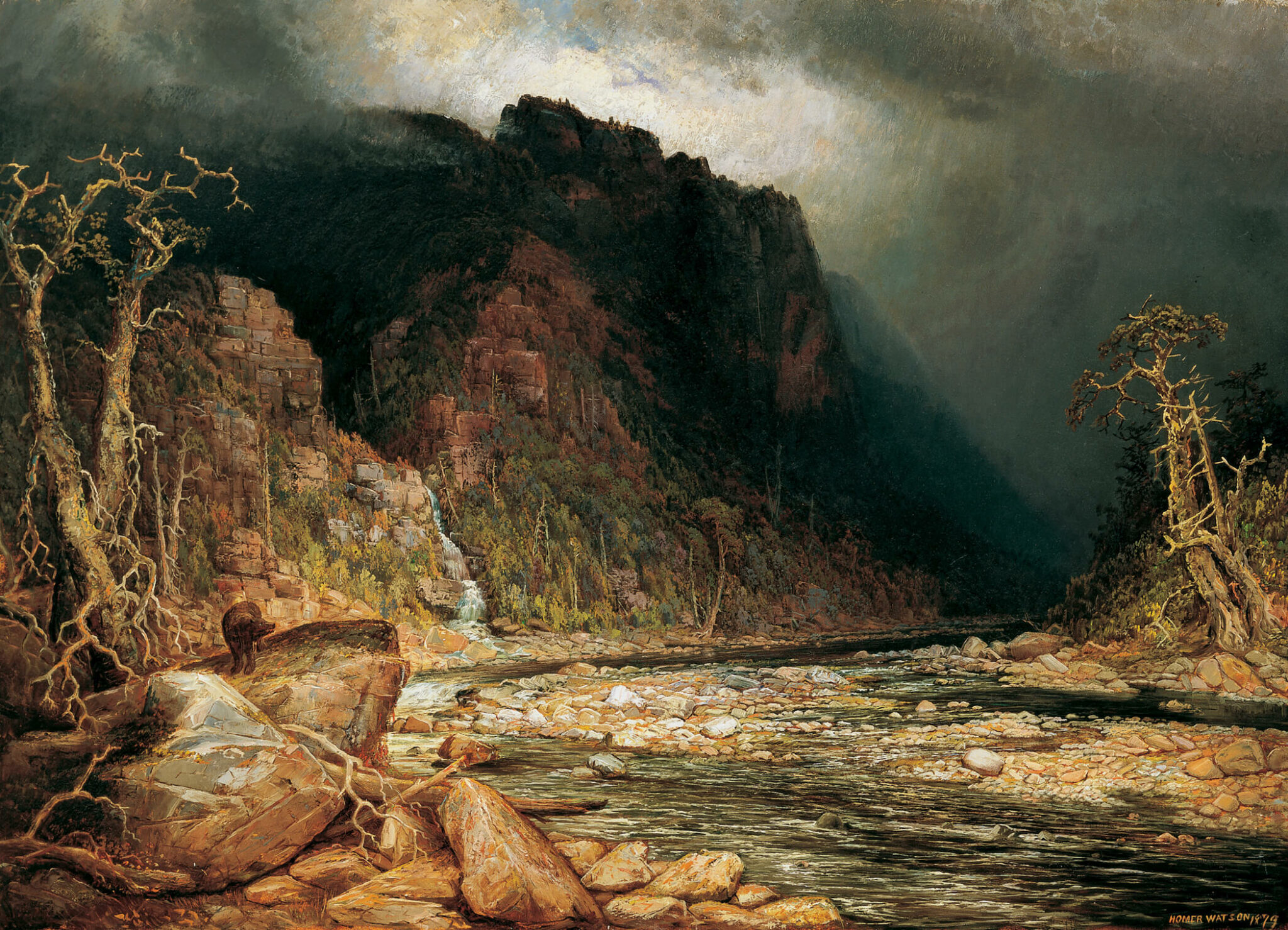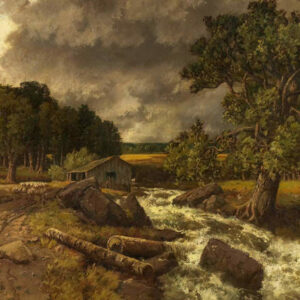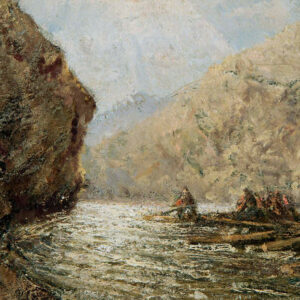A Coming Storm in the Adirondacks 1879

Homer Watson, A Coming Storm in the Adirondacks, 1879
Oil on canvas, 85.7 x 118.3 cm
Montreal Museum of Fine Arts
A Coming Storm in the Adirondacks is one of the first major statements in Watson’s lifelong commitment to portraying nature’s power and drama. The painting contains a wealth of detail—steep cliffs, angry clouds, blasted trees, and dozens of rocks—that Watson controls by subordinating them to an omnipresent, brooding atmosphere. As in Watson’s other oils from the late 1870s and early 1880s, draftsmanship informs all the objects—a trait that would be increasingly replaced by richer brush strokes as the 1880s progressed.
Watson returned home to Doon in 1877 after an extended tour of New York State, where he had painted various small landscapes, such as Susquehanna Valley, c.1877, that carried traces of the work of the Hudson River School of landscape painters. He later recalled of those months: “I got so impatient to rush back home and use all this knowledge that I could not stay . . . any longer.” Although he was eager to paint the familiar landscapes of Doon, Watson also took time to transfer some of his American memories onto canvas. Of these, A Coming Storm in the Adirondacks is a remarkably large and consummate painting for the young and mostly self-taught artist.

The Hudson River School’s work was characterized by both an analytical precision of observation and a romanticism that could sometimes erupt into the kinds of violent effects seen in, for example, Thomas Cole’s Tornado in an American Forest, 1831. Like Cole, Watson presents a tempestuous foreground bordered on both sides by trees and backed by a sky filled with dark, ominous clouds: a dramatic atmosphere that was probably also indebted to the work of the most prominent American landscape painter of the day, George Inness (1825–1894). Watson is highly convincing in his depiction of weather effects in A Coming Storm in the Adirondacks. However, he was less assured in painting animals, something that is evident in the slightly awkward bear in the left foreground (and something that was occasionally noted by critics and collectors).
Overall, however, the canvas is the most impressive of Watson’s American views. It was one of four Watsons shown in the 1879 annual exhibition of the Ontario Society of Artists, where a Toronto Globe reporter—in one of the artist’s earliest favourable newspaper reviews—praised its striking appearance. “The subject is well chosen,” the critic concluded, “and the treatment bold and powerful.” When A Coming Storm in the Adirondacks was seen a year later at the Spring Exhibition of the Art Association of Montreal (AAM; now the Montreal Museum of Fine Arts), newspapers commented on the apparent gap between Watson’s lack of formal training and the clear sophistication of the canvas. The Montreal Gazette’s observation was typical, commending the artist as a “genius comparatively unaided by culture.” The Montreal banker and art collector George Hague evidently agreed, because he purchased A Coming Storm in the Adirondacks out of the exhibition. Seven years later he donated it to the AAM.

 About the Author
About the Author
 More Online Art Books
More Online Art Books
 Acknowledgements
Acknowledgements